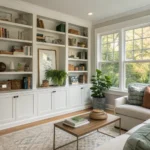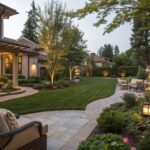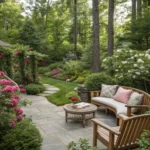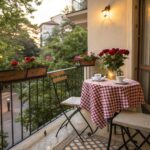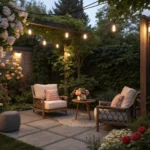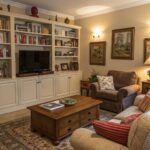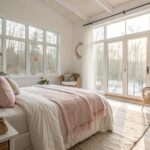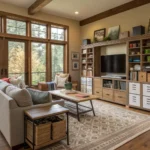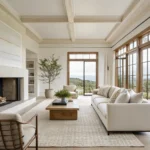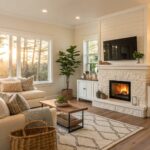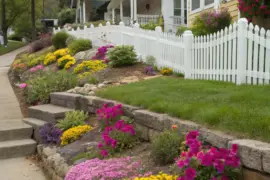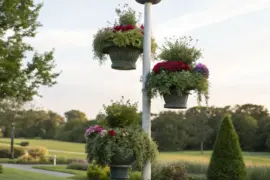Transforming your balcony into a seamless extension of your indoor living space creates an invaluable retreat that blurs the boundaries between inside and outside . With thoughtful design choices and strategic styling, even the smallest outdoor space can become a comfortable sanctuary that rivals your favorite indoor room .
Understanding Your Space: The Foundation of Great Design
Assessing Your Balcony’s Potential
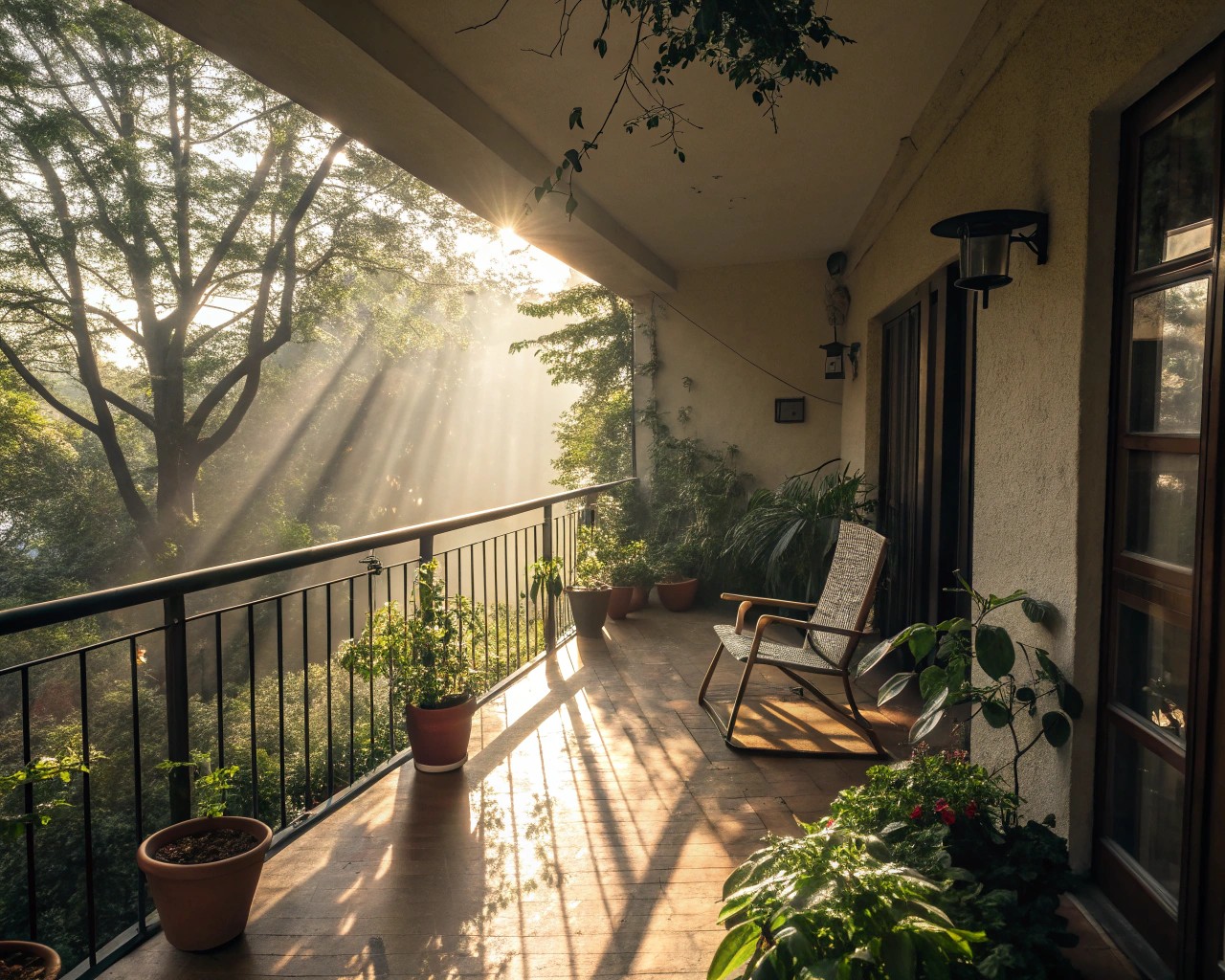
Before selecting furniture or accessories, you need to understand your balcony’s unique characteristics . Measure the dimensions carefully, noting the length, width, and any architectural features like railings or overhead structures .
Key factors to evaluate include:
- Sun exposure patterns – Track sunlight throughout the day to determine placement of seating and shade requirements
- Wind patterns – Note prevailing wind directions that may affect comfort and furniture stability
- Structural limitations – Check weight restrictions and any building regulations that apply to your space
- Privacy concerns – Identify sightlines from neighboring properties that may require screening
I’ve found that spending a full day observing your balcony at different times helps reveal these patterns naturally, allowing you to make informed decisions about layout and functionality.
Creating Functional Zones
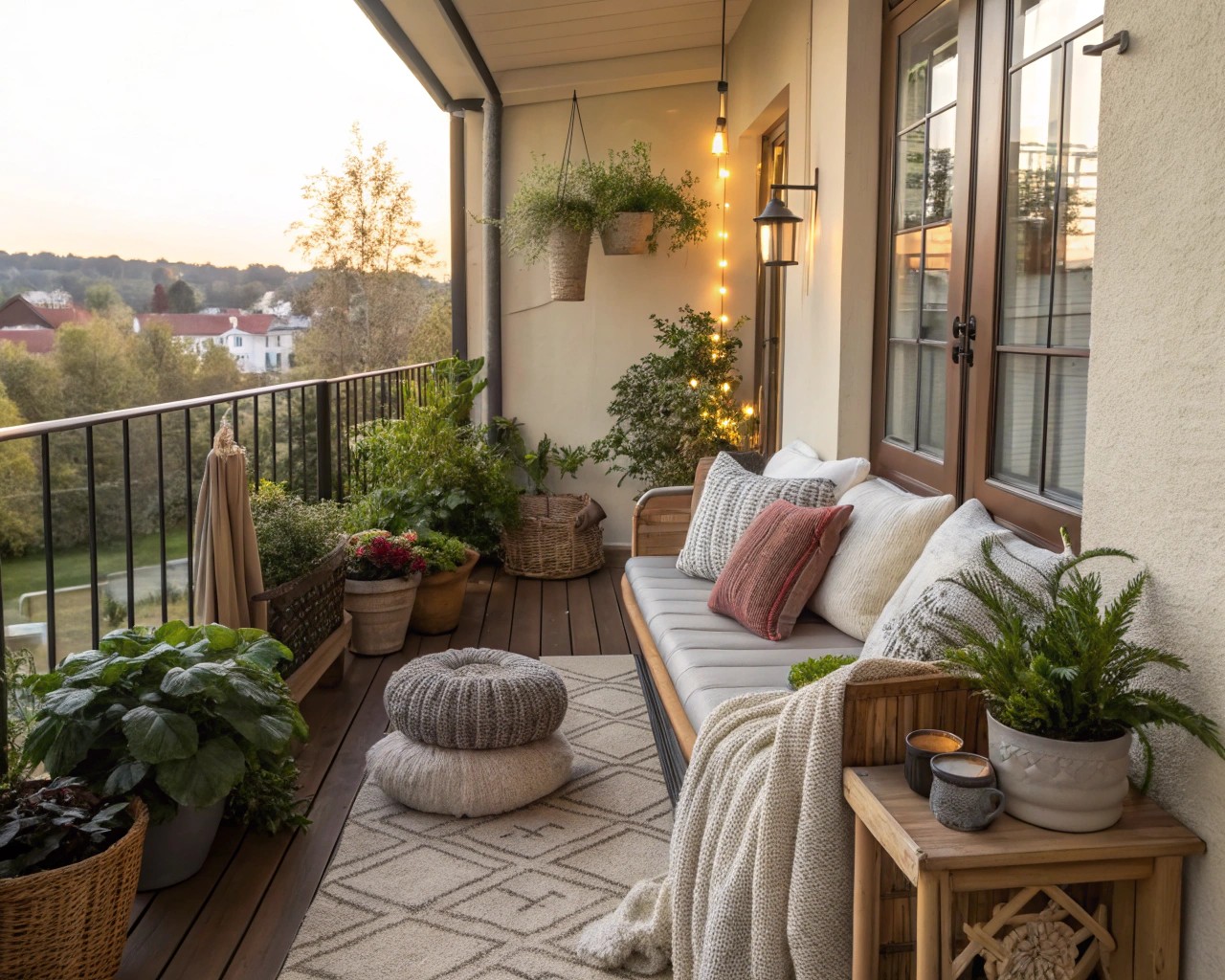
Even compact balconies benefit from designated areas that serve specific purposes . Consider dividing your space into zones such as:
Primary Seating Zone
– Position the main seating area to capture the best views while providing wind protection
– Allow at least 18 inches between furniture pieces for comfortable movement
– Consider the balcony’s primary function: relaxation, dining, or entertaining
Transition Zone
– Create a buffer between indoor and outdoor spaces using consistent flooring materials
– Extend interior color palettes to maintain visual continuity
– Position this area to facilitate easy movement between spaces
Selecting Weather-Resistant Furniture That Feels Like Home
Material Considerations for Durability and Comfort
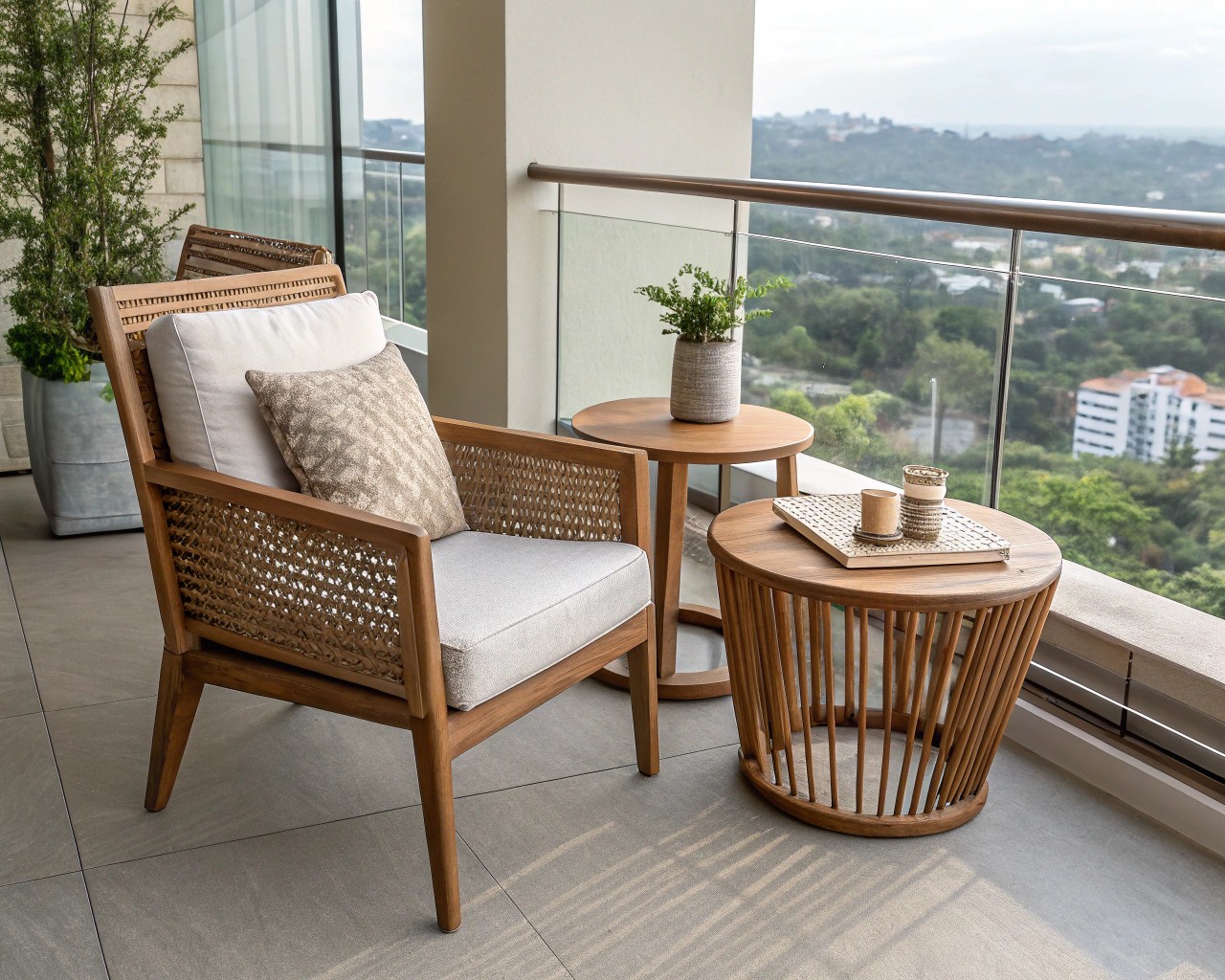
The foundation of any successful balcony living room lies in choosing furniture that withstands outdoor conditions while maintaining indoor comfort levels . Modern weather-resistant materials have evolved significantly, offering both durability and aesthetic appeal.
Top-Performing Materials:
| Material | Durability | Maintenance | Indoor Feel | Best For |
|---|---|---|---|---|
| Teak Wood | Excellent | Medium | High | Traditional aesthetics |
| Powder-Coated Aluminum | Excellent | Low | Medium | Modern designs |
| Resin Wicker | Very Good | Low | High | Casual comfort |
| All-Weather Fabrics | Good | Medium | Excellent | Cushions and textiles |
Furniture Selection Strategy
When choosing seating, prioritize pieces that mirror indoor comfort while meeting outdoor durability requirements . Look for furniture with generous proportions and supportive construction that invites extended relaxation .
Essential Seating Options:
- Sectional sofas – Provide ample seating and create intimate conversation areas
- Lounge chairs – Offer individual comfort zones and flexibility in arrangement
- Storage benches – Combine seating with practical storage for cushions and accessories
- Modular pieces – Allow reconfiguration based on different uses and seasons
I always recommend testing furniture in person when possible, as outdoor pieces can feel different from their indoor counterparts due to material properties and construction methods.
Creating Indoor Comfort Through Textiles and Accessories
Weather-Resistant Cushions and Fabrics
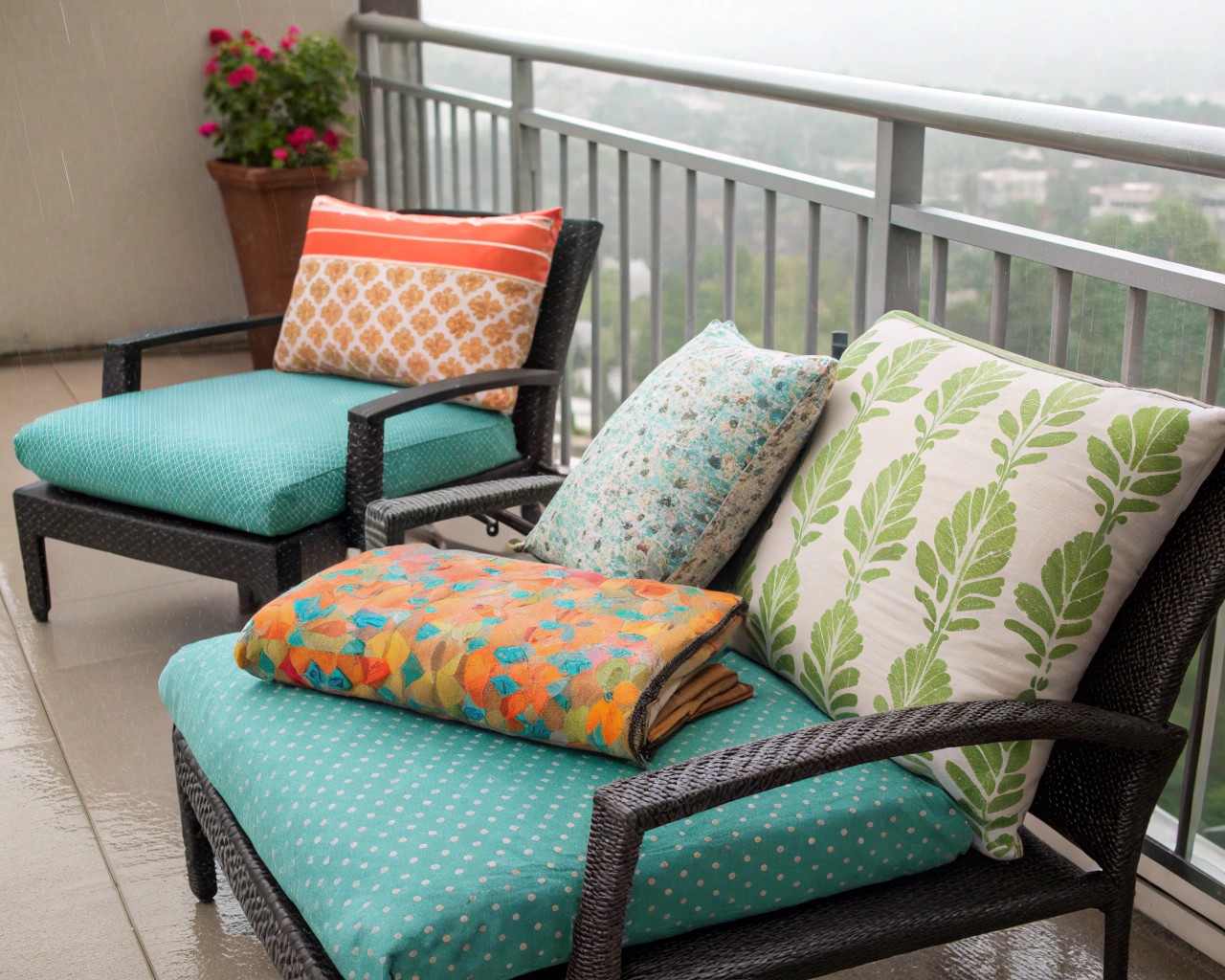
The key to achieving indoor comfort outdoors lies in selecting high-performance textiles that maintain their appearance and functionality through various weather conditions . Solution-dyed acrylic fabrics offer the best combination of durability and comfort for outdoor use .
Premium Fabric Options:
- Sunbrella® fabrics – Industry-leading UV resistance and water repellency
- Outdura® upholstery – Excellent durability with soft hand-feel
- Performance polyester blends – Cost-effective option with good weather resistance
Foam and Filling Considerations
Traditional indoor cushion filling won’t survive outdoor conditions . Choose quick-drying foams specifically designed for exterior use:
- Open-cell foam – Allows water drainage and prevents mold formation
- Polyester batting wraps – Provides additional softness while maintaining drainage properties
- Synthetic down alternatives – Offers comfort without moisture retention issues
Layering for Comfort and Style
Create depth and visual interest through strategic layering of textiles . This approach mirrors successful indoor design while addressing outdoor durability needs:
Layering Strategy:
1. Base layer – Weather-resistant outdoor rug to define the space
2. Seating layer – Primary cushions in coordinated colors
3. Accent layer – Throw pillows in complementary patterns and textures
4. Finishing layer – Lightweight throws for cooler evenings
Lighting Design for Ambiance and Functionality
Creating Layered Lighting Schemes
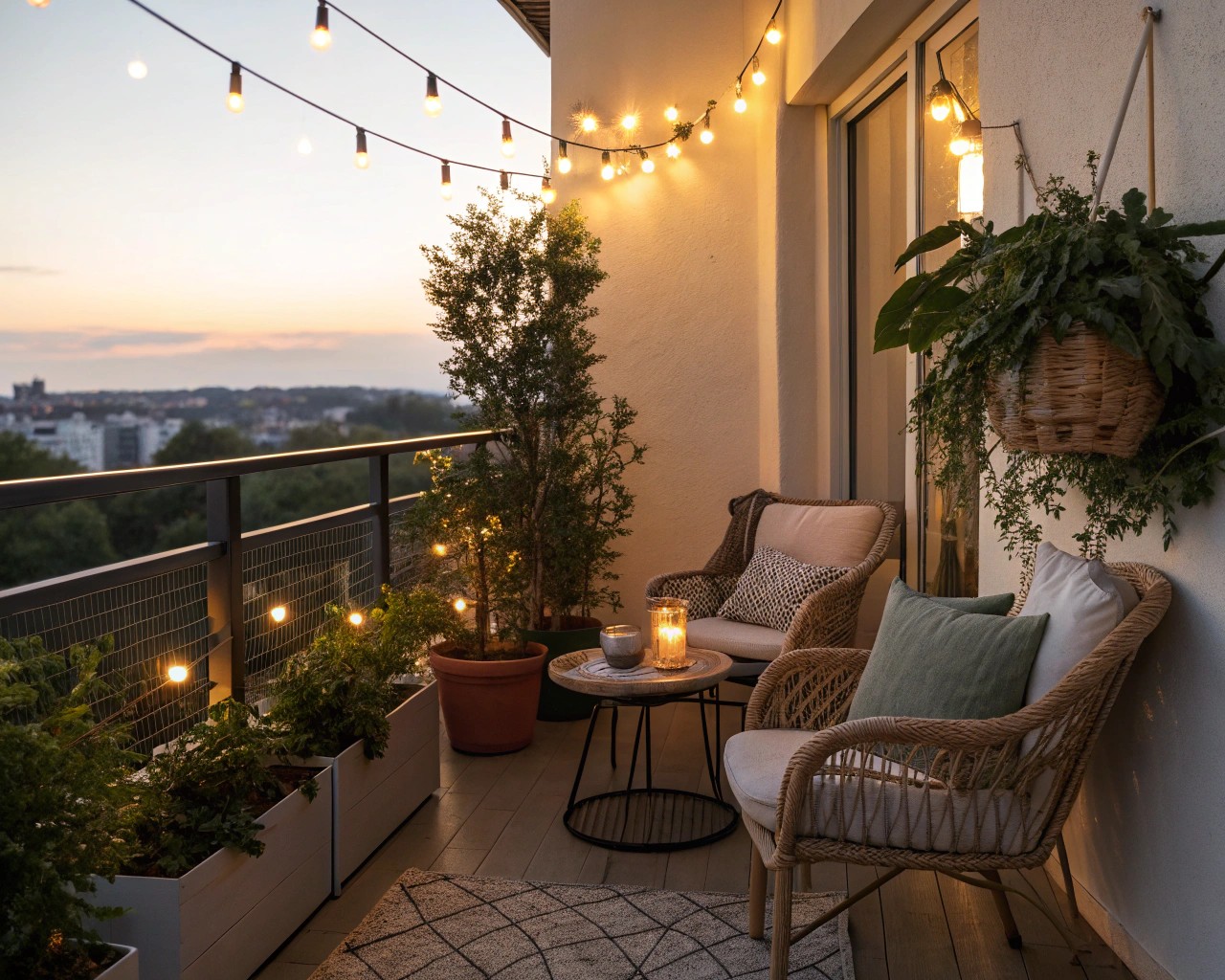
Proper lighting transforms your balcony from a daytime-only space into an inviting evening retreat . Successful outdoor lighting combines ambient, task, and accent lighting principles used in interior design .
Lighting Layer Breakdown:
| Layer Type | Purpose | Best Options | Placement Tips |
|---|---|---|---|
| Ambient | General illumination | String lights, lanterns | Overhead or perimeter |
| Task | Functional lighting | Reading lamps, spotlights | Near seating areas |
| Accent | Visual interest | Solar stakes, uplights | Highlight plants or features |
Energy-Efficient Options
Modern LED technology and solar-powered fixtures offer sustainable lighting solutions that reduce operating costs while providing reliable illumination .
Recommended Lighting Types:
- LED string lights – Energy-efficient with warm color temperatures
- Solar-powered lanterns – Maintenance-free operation with automatic on/off cycles
- Battery-operated table lamps – Portable options for flexible arrangements
- Wall-mounted sconces – Permanent fixtures for consistent ambient lighting
The key is selecting fixtures with appropriate IP ratings for outdoor exposure while maintaining the warm, inviting atmosphere of interior spaces.
Establishing Privacy and Wind Protection
Natural Privacy Solutions

Creating privacy without sacrificing the open feel of your balcony requires careful plant selection and strategic placement . Living screens provide both privacy and visual appeal while contributing to air quality improvement .
Effective Plant-Based Screening:
- Tall container plants – Bamboo, ornamental grasses, or small trees
- Climbing plants – Train vines along trellises or railing systems
- Layered plantings – Combine different heights for comprehensive screening
Structural Privacy Elements
When plant-based solutions aren’t sufficient, consider installing privacy screens that complement your design aesthetic :
Privacy Screen Options:
| Type | Privacy Level | Durability | Aesthetic Impact |
|---|---|---|---|
| Bamboo panels | High | Good | Natural, casual |
| Metal screens | Medium-High | Excellent | Modern, architectural |
| Fabric panels | Medium | Good | Soft, residential |
| Glass panels | Medium | Excellent | Contemporary, clean |
Wind Management Strategies
Protecting your seating area from prevailing winds ensures comfortable use throughout more of the year . Strategic windbreaks can reduce wind speed by up to 50% in protected areas .
Wind Protection Methods:
- Glass windscreens – Maintain views while blocking wind effectively
- Retractable awnings – Provide adjustable protection based on conditions
- Strategic furniture placement – Use larger pieces to create natural windbreaks
Flooring Solutions for Seamless Transitions
Material Selection for Durability and Aesthetics
The right flooring creates visual continuity between indoor and outdoor spaces while withstanding weather exposure . Modern balcony flooring options offer improved durability and easier maintenance than traditional materials.
Balcony Flooring Comparison:
| Material | Weather Resistance | Maintenance | Indoor Continuity | Cost Range |
|---|---|---|---|---|
| Composite decking | Excellent | Low | High | Medium-High |
| Porcelain tiles | Excellent | Low | Excellent | High |
| Outdoor rugs | Good | Medium | High | Low-Medium |
| Wood decking | Good | High | High | Medium |
Installation Considerations
Proper installation ensures longevity and safety, particularly in areas with freeze-thaw cycles common across much of the United States . Consider factors such as:
- Drainage requirements – Ensure proper water runoff to prevent standing water
- Thermal expansion – Allow for material movement in temperature extremes
- Structural load limits – Verify that proposed materials won’t exceed balcony weight restrictions
I recommend consulting with a structural engineer for significant flooring changes, especially in older buildings where load-bearing capacity may be limited.
Plant Selection for Four-Season Interest
Climate-Appropriate Choices
Successful balcony gardening requires selecting plants that thrive in container conditions while tolerating the unique challenges of elevated exposure . Consider your USDA hardiness zone and local microclimatic conditions when making selections.
Proven Performers for Balcony Containers:
Sun-Loving Options:
- Geraniums – Continuous blooms in red, pink, or white throughout growing season
- Lantana – Heat-tolerant with diverse color combinations
- Petunias – Available in hundreds of cultivars with season-long flowering
Shade-Tolerant Choices:
- Impatiens – Reliable bloomers for partial to full shade locations
- Begonias – Diverse forms from upright to trailing varieties
- Coleus – Grown for colorful foliage in sun or shade
Container Strategy
Proper container selection and arrangement maximizes plant health while creating visual impact . Group containers of varying heights to create depth and interest while ensuring adequate drainage for all plantings.
Container Guidelines:
- Size requirements – Minimum 12-inch diameter for most flowering annuals
- Drainage essentials – Multiple holes in container bottoms prevent root rot
- Material considerations – Terracotta breathes but dries quickly; plastic retains moisture longer
Seasonal Adaptations and Storage Solutions
Year-Round Comfort Strategies
Extending your balcony’s usability throughout the seasons requires adaptable design elements and appropriate heating solutions . Modern outdoor heating technology makes shoulder season use comfortable and enjoyable.
Heating Options for Cool Weather:
| Type | Coverage Area | Operating Cost | Portability | Best For |
|---|---|---|---|---|
| Gas patio heaters | Large | Medium | High | Open areas |
| Electric infrared | Medium | Low-Medium | Medium | Covered spaces |
| Fire features | Small-Medium | Variable | Low | Ambiance and warmth |
Smart Storage Solutions
Protecting cushions and accessories during harsh weather extends their lifespan significantly . Built-in storage solutions maintain the clean aesthetic while providing practical functionality.
Storage Strategy Options:
- Waterproof deck boxes – Protect cushions and small accessories
- Bench storage – Combine seating with hidden compartment space
- Vertical organizers – Utilize wall space for tool and supply storage
- Seasonal rotation system – Store off-season items indoors to maximize space
Maintenance and Care for Longevity
Preventive Maintenance Schedule
Regular maintenance preserves both the appearance and functionality of your outdoor living space . Establishing a routine care schedule prevents small issues from becoming major problems.
Monthly Tasks:
- Clean furniture surfaces with appropriate cleaners for each material type
- Check and tighten any loose bolts or connections
- Remove debris from drainage areas and container saucers
Seasonal Tasks:
- Apply fabric protection spray to cushions and textiles
- Inspect and clean lighting fixtures and electrical connections
- Assess plant health and adjust watering schedules based on weather
- Store or cover sensitive items during extreme weather periods
Long-Term Investment Protection
Quality outdoor furniture and accessories represent significant investments that deserve proper protection . Understanding warranty terms and following manufacturer care instructions ensures maximum return on your investment.
The most successful balcony living rooms result from thoughtful planning, quality material selection, and consistent maintenance practices that preserve both beauty and functionality over time.
By implementing these strategies systematically, you’ll create an outdoor living space that truly functions as an extension of your indoor comfort zone, providing year-round enjoyment and adding significant value to your living experience. The key lies in treating your balcony not as an afterthought, but as an integral room in your home that happens to be outdoors.



